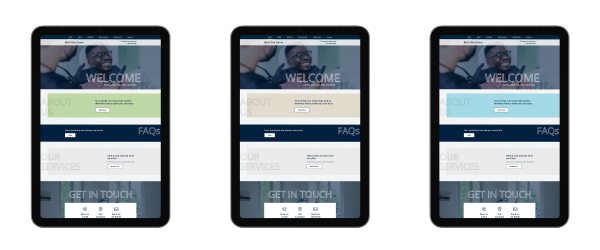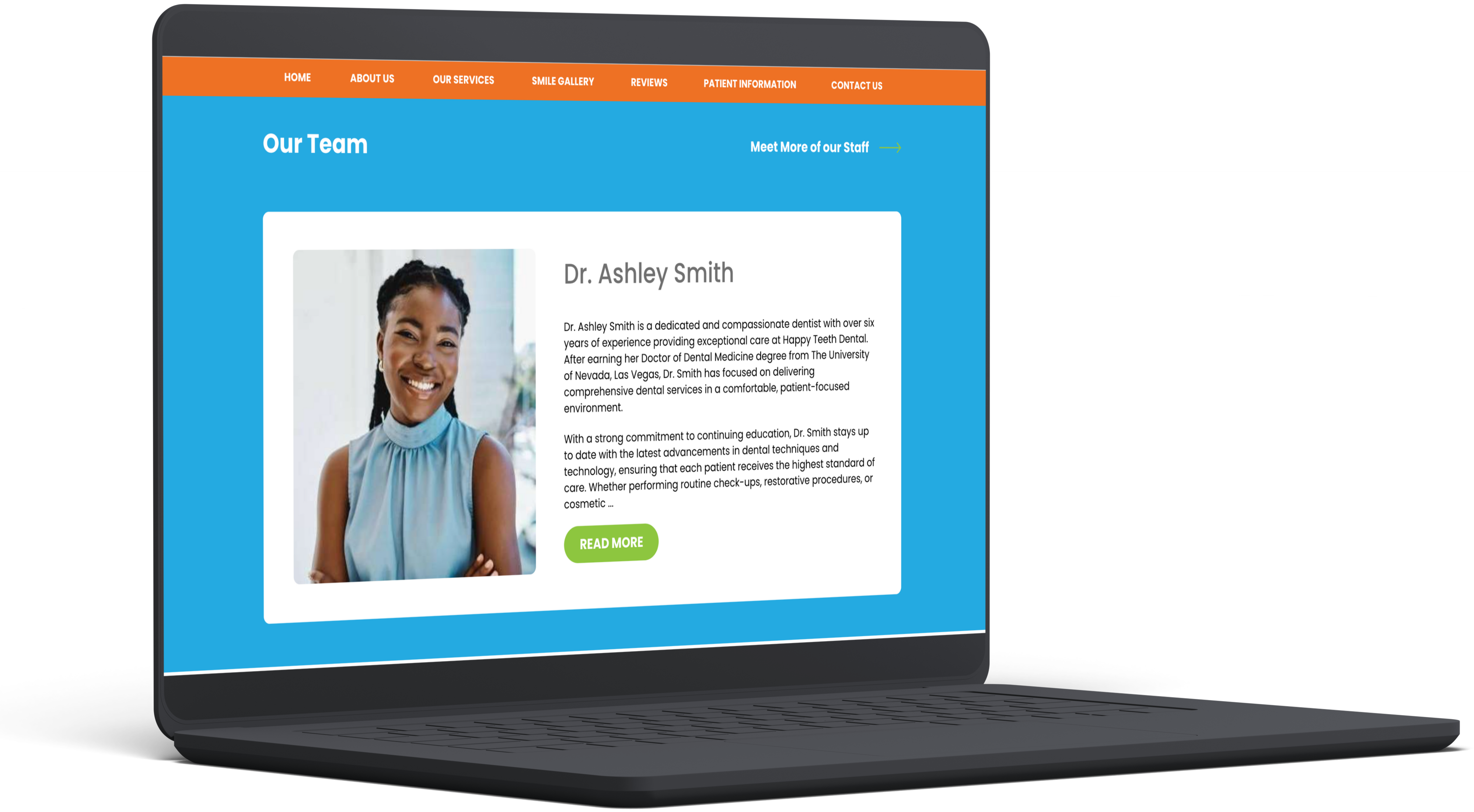In today’s busy and connected world, digital marketing has never been more critical or more competitive for dental practices, and it has changed drastically over the last decade.
To reach the most potential patients, a successful dentist must consider all dental marketing options and be especially savvy with modern online marketing tools.
We understand that this can seem overwhelming when you’re trying to manage a busy dental practice and focus on providing exceptional patient care, and we’re here to help. At GDW, we offer marketing services from the ground up, including building or enhancing your website to ongoing monthly services to keep your website relevant, updated, and reaching the new patients you want to attract.
Here we’re providing you with a “Marketing Glossary 101” to help you be ahead of the game when it comes to understanding marketing terminology. When you know the correct language, you can ensure you’re receiving the right services and creating marketing strategies that will genuinely benefit your practice.
Digital Marketing Glossary for Dentists
A/B Testing
A/B testing compares the data between two examples of the same variable to see which one provides better results. For your dental practice’s marketing efforts, this could be creating two different landing pages for your paid search campaign and comparing which landing page leads to more appointment bookings.
Analytics
Analytics focuses on collecting and analyzing data that allows you to make observations, notice trends, and then create strategies that inform your dental marketing efforts. This can include bounce rates, website activity reports, or PPC (pay-per-click) data. Google and other companies offer analytics services to help keep you abreast of the right marketing strategies for your dental practice.
Blogging
Blogs are short or long-form informative content you can include on your website and add regularly (on a monthly basis is ideal). Blogs can consist of text, photos, charts, and even videos that you can use to share important information with potential patients and your online community.
Ongoing blogging has numerous benefits for dental practices but one of its primary purposes is to provide new and relevant content containing keywords that will improve your SEO rankings and ultimately drive traffic to your website.
Bottom of the Funnel (BOTF)
BOTF refers to someone in the conversion stage of the sales funnel. This patient has gathered the information they need and is ready to take the next step and schedule an appointment with your dental practice.
Bounce Rate
Bounce rate refers to the percentage of people who land on your dental website but leave without interacting with it (clicking or scrolling). Bounce rate typically impacts conversion rates because when someone leaves your site too soon, you’re missing out on opportunities to convert them into a new patient for your dental practice.
Call-to-Action (CTA)
A CTA refers to a link, button, or text that encourages your potential new patient to take the next step and contact you for more information or to schedule an appointment. You should include CTAs in your blogs, FAQs, and service description pages, typically at the end.
An example of a compelling CTA would be, “To learn more about how dental implants can restore your smile, click here to contact our dental office.”
Content Calendar
Online marketing requires a constant stream of new and engaging content to be successful. A savvy dental marketer will create a content calendar with a plan for creating and releasing new content throughout the month.
Conversion Rate
Conversion rate refers to the percentage of visitors who come to your website and then schedule an appointment, fill out a new patient form, etc. To figure out your conversion rate, take the number of visitors that schedule an appointment and divide it by the total number of visitors to your site.
Conversion rates vary greatly depending on the types of marketing campaigns you are using to drive traffic to your website, but a higher conversion rate generally indicates that your marketing efforts are doing a good job of targeting relevant patients who are likely to schedule at your practice.
Cost Per Conversion (CPC)
CPC refers to the amount you spend to generate a lead or new patient. Therefore, when creating your marketing budget and plan, it’s essential to keep this cost in mind.
Customer Acquisition Cost (CAC)
CAC refers to the total cost of your marketing and sales plan. To calculate your CAC, take the total cost of what you’ve spent for your dental marketing campaigns and divide it by the total number of new patients gained during that period. CAC is an essential tool to help you determine if your marketing strategies are effective.
Customer Lifetime Value (CLV)
CLV refers to the value that each patient brings to your practice. Determining your CLV can help you strategize your dental marketing campaigns and ensure that you’re getting the most from your marketing dollars. It also enables you to choose the best way to manage your patient relationships and build loyalty among your patients.
Customer Relationship Management (CRM)
CRM refers to the process you use to monitor and maintain communication with your patient base. You can typically do this with a software program that logs patient interactions with your team, schedules and confirms appointments, sends emails, etc. Some CRMs even integrate social media feeds into their platforms, so you efficiently manage all of your interactions with patients.
Dynamic Content
Dynamic content refers to delivering more personalized and engaging content than just text and calls to action. Dynamic content personalizes the user experience on your dental website to help keep visitors to your site more engaged.
Email Automation (Email Marketing)
Email automation (commonly called email marketing) refers to software you can use to create mass personalized emails and schedule their delivery to your patients. This type of automation allows you to reach more patients faster, and you’ll only have to create your message once. You can learn more about how email marketing can grow your dental practice here.
Engagement Rate
Engagement rate gives you the data on how patients interact with your social media content. You can calculate this rate by dividing the number of interactions your content receives (likes, shares, comments, etc.) by the total number of people who can view it.
Evergreen Content
Evergreen content refers to the type of content that remains relevant beyond specific events or timeframes. This content will continue to educate your readers no matter when you post it. Evergreen content is considered high-quality and very beneficial for SEO ranking.
Hashtag
A hashtag, also called the pound sign, helps you tag specific keywords on social media. You can use the hashtag to highlight specific terms or draw attention to certain topics. You can even use hashtag monitoring tools to keep track of the response to your hashtags.
Infographic
An infographic refers to a visual presentation of data or information through charts, graphs, etc. Infographics can make your dental content more visually appealing and easier to understand.
Keyword
A keyword refers to a phrase or words that people use to search for information. Keywords are a crucial component of dental SEO. Search engines match visitors to websites with keywords relevant to what they’re looking for.
For example, a patient interested in dental implants may type in a phrase like “dental implants in Houston, TX.” Using keywords throughout your content will help optimize it for search engines looking to match interested new patients with your website.
Landing Page
A landing page refers to where your patients will receive the information they need to move forward. Whether you’re inviting them to schedule an appointment, fill out a form, or subscribe to your blog, this will be the spot where you will generate your leads. Therefore, your landing page should be informative, engaging, and easy to navigate.
Lead Nurturing Email
Lead nurturing emails help provide information that will guide your prospective patient through the sales process, so ultimately, they schedule an appointment to meet you. These emails should be informative but not pushy. Also, be careful not to inundate your visitors with too many emails.
Lifecycle Stages
Lifecycle stages help classify your current relationship with your audience. Typically, there are three stages: awareness, evaluation, and purchase. Therefore, it’s essential to match your content with the appropriate stage of your audience’s lifecycle. For example, if someone is interested in dental implants, perhaps your content directs them to your e-book on the benefits of implant dentistry.
Middle of the Funnel
Middle of the funnel refers to the evaluation stage of the lifecycle. In this stage, your prospective patient has identified a problem or situation that they would like more information about. This is an excellent time to provide them with educational content that could include something like a case study. This is also an excellent time to introduce your dental practice as the solution to their problem.
Mobile Marketing
Mobile marketing refers to strategies used to market on mobile devices. Today's searches are increasingly done on mobile devices, and search engines have responded by increasing the importance of responsive web design in their ranking algorithms. For SEO purposes, you’ll want to ensure that your dental website is optimized to provide accessible service on mobile devices as well as desktops.
Responsive Web Design
RDW allows viewers to engage with your dental website on all types of devices. So whether they choose to use a desktop computer or an iPhone, they should have the same user-friendly experience finding the information they need.
Search Engine Optimization (SEO)
Dental SEO refers to the process of enhancing your website to increase the quantity and relevance of its traffic. SEO involves a variety of ongoing techniques that are taken to improve your search engine ranking for relevant keywords. Having rankings means that your website has better visibility, and more potential patients can find your dental practice when searching online.
Top of the Funnel (TOFU)
TOFU refers to the first stage of the buying process. This is when your prospective patients first begin to identify their needs and seek out information. With this content, you want to introduce them to your practice and make it as simple as possible to find the additional information they might need to help move them through the sales funnel.
User Experience (UX)
UX refers to the overall ease with which patients can interact with your dental practice through your website, social media, etc. You want to ensure that each phase of the funnel provides the correct information and makes it as simple as possible for patients to find what they need and then take the next steps towards scheduling an appointment.
User Interface (UI)
UI describes the interface on your website that allows visitors to interact with it, such as the navigation bar, buttons, videos, or other windows. Your website should have a clean, user-friendly UI that is easy for visitors to navigate. A cluttered or complicated UI may cause visitors to leave your website.
Whitepaper
A whitepaper is written to provide specific information about a particular topic. You can use a whitepaper as an offer or incentive for visitors to your dental website to provide their contact information for marketing purposes.
Questions About Dental Marketing? Contact Us!
Hopefully, this glossary helps you understand some of the basics of digital dental marketing terminology. If you have questions or need help with marketing strategies for your dental practice, don’t hesitate to contact your team at GDW.






